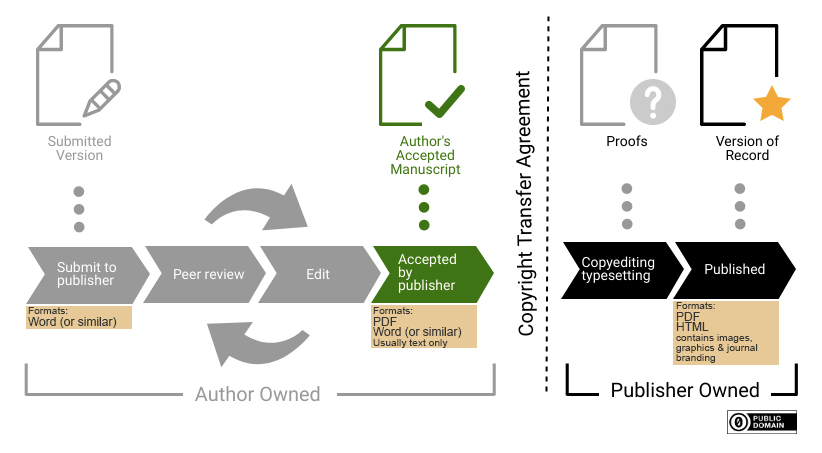Open Access Week 2025, Day 1: Publishing Open Access
Welcome to Day 1 of The 5 Days of Open Access Week!
By Katherine Hughes, EMBL Open Science Information Specialist
The theme for this year’s OA Week is: Who Owns Our Knowledge. We aim to inform you about open access and publishing business models, as they directly impact who can read, share, and build upon scientific work. Open access helps ensure that knowledge is a shared public good accessible to other researchers, educators, policymakers, and the public.
At the same time, understanding publishing business models is essential for scientists because not all “open” models are equitable. By being informed and engaged, researchers can advocate, and importantly, choose fairer, more transparent, and sustainable publishing systems that support reproducible and inclusive exchange of knowledge.
First, a refresher on the different types of OA for publications. The two commonly known ways to publish OA (and are funder-compliant) are green and gold.
Green OA also known as self-archiving, is where an author publishes a paper in a subscription or hybrid journal and then deposits the Author Accepted Manuscript in a repository, preferably with a Creative Commons Attribution (CC BY) License.

Gold OA is when the published version is made OA under a Creative Commons license, usually in exchange for a fee. Authors should not confuse gold OA as the “gold standard” but as another way to disseminate their work openly.
There are other less well-known colours in the OA spectrum. ‘Bronze’ and ‘Black’ OA that makes the publication ‘free-to-read’. Neither of these meets the true purpose of OA as they don’t have guaranteed sustainable access or a copyright re-use license.
So how does one publish OA? Understanding the different types of business models can help authors figure out how to publish their papers OA.
APCs: APCs: Most authors are familiar with APCs for Gold OA. This business model was introduced early on and moves the burden of payment from the reader to the author. Authors or their institutions pay an individual article fee for the version of record (VoR) to be published OA. Both fully OA journals, such as Nature and BMC journals, use the APC model as well as traditional subscription journals with the option to publish OA like Cell or Nature Genetics (known as hybrid journals). The fees can range from £200 – £9,190 per article, with the higher APC usually correlating to journals with higher impact factors. For those without funding, APCs can create new barriers for researchers to share their discoveries especially in low- and middle-income regions or institutions.
R&P Deals: To relieve the financial strain and administrative burden of paying individual APCs for each article published, publishers combined the read fee with a publishing fee to create agreements known as Read & Publish Deals or Transformative Agreements (they go by many more names, but there isn’t enough space here to cover them all). The deals have resulted in some financial savings, allowed unfunded authors at institutions to publish OA, and are slightly less burdensome administratively; however, they are a headache to negotiate, don’t allow institutions any control over what they are subscribing to, and recently, cost savings have been difficult to maintain. The aim of these deals was to flip journals from subscription/hybrid models to fully OA. However, it was estimated in a 2023 report that at the rate the big 5 publishers* are flipping journals, it will be 70 years before all journals become fully OA. This has meant that many funders, such as Wellcome Trust and UKRI, which initially championed R&P deals, no longer financially support them.
Diamond OA: The Diamond OA model is both free to read and free to publish. This model sustains itself through institutional or volunteer funds from organizations like libraries and funders, or donations. The model has done particularly well in Latin America, where roughly 90% of OA journals are diamond OA. However, there are concerns about whether this model is sustainable. Many of these journals are scholar-led and reliant on volunteer labour.
While many fear that academic publishing is broken, there are a lot of innovative new models being tested, such as university-lead publishing platforms, Subscribe to Open (S2O), or the publish, review and curate model being built around preprints. Only a few of the models have been highlighted here, but if you are interested in knowing more, or continuing the discussion, come and chat to us at osim@embl.org.
Complete the quiz to test your knowledge of open access (and for a chance to win a prize).
*The big 5 publishers are Elsevier, Springer Nature, Wiley, Taylor & Francis, and Sage.